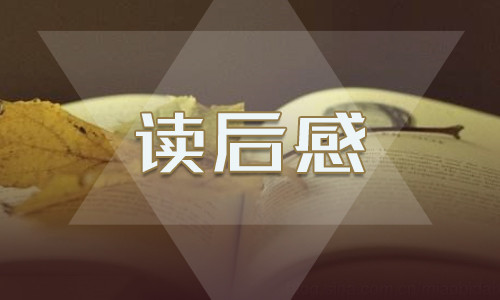Literary Terms
???
Allegory
Allegory is a figurative mode of representation conveying a meaning other than the literal. Allegory teaches a lesson through symbolism. Allegory communicates its message by means of symbolic figures, actions or symbolic representation. Allegory is generally treated as a figure of rhetoric, but an allegory does not have to be expressed in language: it may be addressed to the eye, and is often found in realistic painting, sculpture or some other form of mimetic, or representative art. Simply put, an allegory is a device that can be presented in literary form, such as a poem or novel, or in visual form, such as in painting or sculpture. As a literary device, an allegory in its most general sense is an extended metaphor. As an artistic device, an allegory is a visual symbolic representation. An example of a simple visual allegory is the image of the grim reaper. Viewers
understand that the image of the grim reaper is a symbolic representation of death. Nevertheless, images and fictions with several possible interpretations are not allegories in the true sense. Furthermore, not every fiction with general application is an allegory.
Beast fable
Beast fable is the commonest type of fable, in which animals and birds speak and
behave like human beings in a short tale usually illustrating some moral point. The fables attributed to Aesop (6th century BCE) and those written in verse by Jean de la Fontaine (from 1668) are the best known, along with the fables of Brer Rabbit adapted by the American journalist Joel Chandler Harris from black folklore in his ?Uncle Remus? stories (from 1879).
Parable
A parable is a brief, succinct story, in prose or verse, that illustrates a moral or religious lesson. It differs from a fable in that fables use animals, plants, inanimate objects, and forces of nature as characters, while parables generally feature human characters. It is a type of analogy.
Ballad
A ballad is a form of verse, often a narrative set to music. Ballads were particularly characteristic of British and Irish popular poetry and song from the later medieval period until the 19th century and used extensively across Europe and later North America,
Australia and North Africa. Many ballads were written and sold as single sheet broadsides. The form was often used by poets and composers from the 18th century onwards to produce lyrical ballads. In the later 19th century it took on the meaning of a slow form of popular love song and the term is now often used as synonymous with any love song,
particularly the pop or rock power ballad. In the second half of the 20th century ballads became increasingly popular in Spanish speaking Latin America giving thus origin to the Latin American romantic ballad, a genre by it's own.
Epic
An epic is a lengthy narrative poem, ordinarily concerning a serious subject containing details of heroic deeds and events significant to a culture or nation. Oral poetry may qualify as an epic, and Albert Lord and Milman Parry have argued that classical epics were fundamentally an oral poetic form. Nonetheless, epics have been written down at least since Homer, and the works of Vyasa, Virgil, Dante Alighieri and John Milton would be unlikely to have survived without being written down. The first epics are known as primary, or original, epics. Epics that attempt to imitate these like Virgil's Aeneid and Milton's Paradise Lost are known as literary, or secondary, epics. One such epic is the Anglo-Saxon story Beowulf. Another type of epic poetry is epyllion (plural: epyllia) which is a brief narrative poem with a romantic or mythological theme. The term, which means 'little epic', came in use in the nineteenth century. It refers primarily to the type of erotic and mythological long elegy of which Ovid remains the master; to a lesser degree, the term includes some poems of the English Renaissance, particularly those influenced by Ovid. One suggested example of classical epyllion may be seen in the story of Nisus and Euryalus in Book IX of Aeneid.
Dream vision
A dream vision is a literary genre, literary device or literary convention in which the narrator falls asleep and dreams. In the dream there is usually a guide, who imparts knowledge (often about religion or love) that the dreamer could not have learned otherwise. After waking, the narrator usually resolves to share this knowledge with
other people. The dream-vision convention was widely used in European literature from late Latin times until the fifteenth century. If the dream vision includes a guide that is a speaking inanimate object, then it employs the trope of prosopopoeia.
Elegy
An elegy is a mournful, melancholic or plaintive poem, especially a funeral song or a lament for the dead.
Chivalric romance
Chivalric romance, the principal kind of romance found in medieval Europe from the 12th century onwards, describing (usually in verse) the adventures of legendary knights, and celebrating an idealized code of civilized behaviour that combines loyalty, honour, and courtly love. The emphasis on heterosexual love and courtly manners distinguishes it from the chanson de geste and other kinds of epic, in which masculine military heroism
predominates. The most famous examples are the Arthurian romances recounting the adventures of Lancelot, Galahad, Gawain, and the other Round Table knights.
Alliteration
Alliteration is a literary or rhetorical stylistic device that consists in repeating the same consonant sound at the beginning of two or more words in close succession. An example is the Mother Goose tongue-twister, \eppers …\ Alliteration is usually distinguished from the mere repetition of the same sound in positions other than the beginning of each word — whether a consonant, as in \mammals are clammy\but the term is sometimes used in these broader senses. Alliteration may also include the use of different consonants with similar properties (labials, dentals, etc.) or even the unwritten glottal stop that precedes virtually every word-initial vowel in the English language, as in the phrase \
pronunciation of the \especially in poetry. Alliterative verse was an important ingredient of poetry in Old English and other old Germanic languages such as Old High German, Old Norse, and Old Saxon. On the other hand, its accidental occurrence is often viewed as a defect.
End rhyme
An end rhyme is a rhyme where the sound consisting of the final vowel sound and all following consonants is exactly the same as another word. It doesn't necessarily mean that the final syllables are the same, because in a syllable you could have a consonant sound preceding a vowel sound. If the sounds of the final syllables of two words are the same, then that would be called a \has the last syllable \be a last syllable rhyme. Therefore, \
\the \. Instead, any word ending with the sound \would be an end rhyme. Therefore, \of \
Objective correlative
An objective correlative is a literary term referring to a symbolic article used to provide explicit, rather than implicit, access to such traditionally inexplicable concepts as
emotion or colour. The theory of the objective correlative as it relates to literature was largely developed through the writings of the literary critic and author T. S. Eliot who is associated with the Formalist interpretation of literature. Helping define the objective correlative, T. S. Eliot?s essay “Hamlet and His Problems” in his book The Sacred Wood: Essays on Poetry and Criticism discusses his view of Shakespeare?s incomplete development of Hamlet?s emotions. In this essay, Eliot states: “The artistic
?inevitability? lies in this complete adequacy of the external to the emotion….”. The





